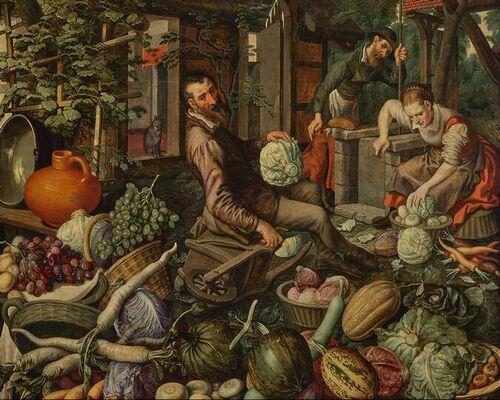Articles
Exploring History's Greatest Adventures throughout time!


Peasant food in the Middle Ages was hard work
What did medieval people eat?
That depended on their economic class – or how rich they were. The royals and nobles ate… well… like kings! But the peasants had to grow their own food. They didn’t have a grocery store or microwaves. There was a lot of work involved before you could eat.
Most peasants lived on bread and pottageTheir breads and pottage were all homemade. Pottage is a sort of vegetable stew made from whatever they grew in their kitchen garden.1 Peasants didn’t eat a lot of meat. It was too expensive to buy meat. They couldn’t hunt because they didn’t own the land. Poaching on someone else’s property was against the law.
The kind of bread they ate depended on where they lived. Climate and the quality of dirt determined the type of grain they could grow. In England, peasants often made bread from cheaper, rye grain, instead of wheat. In France, they often mixed wheat with the rye. Bread could also be made with barley, buckwheat, millet and oats.
Harvest time was not easy!
You can’t just pick the grain and put it in the mixing bowl. There was a lot more to do first. It all starts months earlier with plowing the dirt, planting the seeds, watering the rows, removing the weeds, scaring off the birds, beating back the bugs and crossing all their fingers and toes to ensure that bad weather, like late frost, hail or a severe rain storm, would not destroy their precious crop.
When the grain was finally ripe, it was time to harvest it. That means to pick the results of all that labor. And more…
Here are all the steps it took to harvest grain and turn it into bread flour:
Men used a sickle, or scythe to reap the fields. The scythe had to be sharp to cut through the stalks.
The women followed behind to collect the stalks into bundles. They tied the bundles into sheathes and put them in a barn or other covered building to dry.
Children followed the women to glean the little bits of grain or stalks that the women missed. They collected these in a basket. Nothing went to waste!
The women threshed the dried grain. They grabbed a handful of stalks and beat the heads against a board to make the grain fall off into a waiting basket.
Then they winnowed the grain to separate it from the outer casing (chaff). To do this, they used a shallow pan. They lightly tossed the grain in the pan repeatedly and let the breeze carry the light chaff away while the heavier grain remained in the pan. They could also use two pans and gently roll one to the other to separate the chaff and grain.
Finally, they took the clean grain to the local mill where it was ground between two giant slabs of stone to make flour. The miller put the newly milled flour into giant sacks to keep it clean and dry.
They needed enough flour to last the entire year until next harvest time. The family cat helped to keep mice away from the sacks throughout the year.
At long last they could use the flour to make bread. That’s good, because they really worked up an appetite. Peasants ate a lot of bread. Some experts estimate they ate about two pounds of it every day.2
Other foods required harvesting, drying and preserving too
The women dried their beans and peas to make them last longer. Then they could cook and eat them during the winter when food was scarce. Root vegetables like carrots and onions would also last for months if they kept them cool and dry.
They could also preserve their vegetables in salt or vinegar. The peasants didn’t know about vitamins back then, but having preserved vegetables during the winter kept them healthy, even if they didn’t know why. Then, when the weather turned warm, they could eat lettuce and other spring crops from their gardens.
Medieval peasants didn’t eat much. But they worked very hard for the little bit they got.
Sources:
1 “Medieval Food: From Peasant Porridge to King’s Mutton” History on the Net. © 2000-2021, Salem Media. Available at: https://www.historyonthenet.com/medieval-food. Accessed August 12, 2022.
2 Medievalist.net. Bread in the Middle Ages. Available at: https://www.medievalists.net/2013/07/bread-in-the-middle-ages/. Accessed August 12, 2022.
Image: After the harvest, Pieter Aertsen (Amsterdam circa 1508 – Amsterdam 1575)
Learn More...
Read about what nobility ate in a separate but related article…
Go to "Eat Like a King" article
Download our FREE Medieval Foods crossword puzzle
Ask a parent or teacher to download our crossword puzzle, which uses vocabulary terms about medieval foods from both articles: Eat Like a King and Peasant Foods.


